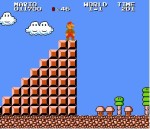The soul becomes dyed with the color of its thoughts – Marcus Aurelius
There are five distinctive levels of personal creativity – How creative are you and others?
Although definitions of creativity seem to differ greatly, most of us recognize higher levels of creativity when we see or hear it. These encounters often cause us to stop in our tracks as many forms of creativity can be arresting, unusual, breathtaking, disturbing, delectable, highly amusing, or just very, very different. And while creativity is a human gift, alas we are not all at the same level of creativity. Like many other things in nature, creative individuals differ by varying degrees.
Below are categorical divisions of varying degrees of creativity. As you read these definitions see if you can think of people who fall into each category. The first three levels can be attained by anyone through natural gifts and with motivation and persistence. The last two levels are those folks with exceptional gifts — and this type of creative being is born, not bred. Here I use the word “artist” as a generic noun and meaning persons having any type of creativity as levels of creativity encompass many forms of artistic expression and invention.
1. Expressive creativity, as in the spontaneous drawings of children.
The first level incorporates the primitive and intuitive expression often found in children and in adults who have not been trained in the arts. There is an innocent quality to primitive art, but also directness and sensitivity. The naive artist creates for the joy of it. The paintings of Grandma Moses would be a prime example of this category or many examples of folk art.
2. Productive creativity, as in artistic or scientific products where there are restrictions and controlled free play.
The second level of creativity is the academic and technical level. At this level the artist learns skills and techniques, developing a proficiency that allows creative expression in a myriad of ways. The academic artist adds power to expression through the mastery of craft.
3. Inventive creativity, where ingenuity is displayed with materials, methods, and techniques.
Many artists experiment with their craft, exploring different ways of using familiar tools and mediums. This heralds the third level of creativity, invention. Breaking rules is the order of the day, challenging the boundaries of discipline or academic tradition, and becoming increasingly adventurous and experimental. Inventive creators use academic tradition and skills as a stepping-stone into new frontiers.
4. Innovative creativity, where there is improvement through modification involving conceptualizing skills.
At the level of innovation the artist becomes more original. Materials and methods that are out of the ordinary are introduced. Now the artist breaks the boundaries. The academic foundation remains as a substructure of unconscious thought guiding these creative efforts.
5. Imaginative creativity, where there is an entirely new principle or assumption around which new schools, movements, and the like can flourish.
The fifth level of creativity is characterized as genius. There are individuals whose ideas and accomplishments in art and science defy explanation. Genius is arguably the one level that is unexplained and perhaps unattainable through persistence or applied work ethic. Rather it is something that an individual is born with. That said it can certainly be nurtured and supported, or suppressed by external control.
Summarized, and expanded by Leslie Owen Wilson from: I. A. Taylor, (1959) The nature of the creative process. (In P. Smith, ed. Creativity) Hastings House. New York. This page, with Taylor’s definitions of the varied levels of creativity appeared in my unpublished course packet for the graduate course Creativity in the Classroom (later renamed The Creative Teacher) ED 794 from 1993-2008. The content on this page also appeared on webpages supporting this course from 1997.

Continued reading: Jeff DeGraff has written a 5 part series, Mastering the 5 levels of creativity, for the Huffington Post. These posts offer a different perspectives on the levels of creativity and include much to consider as we think about the varied degrees of creativity and different forms of creative expression. Plus Jeff offers numerous insights, suggestions, and connections — check it out.
Original materials on this site are copyrighted to Leslie Owen Wilson – e-mail
___________________________________
